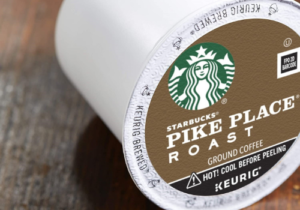Can You Use Cold Brew Coffee Grounds To Make Hot Coffee?

Coffee is a staple in many households and cafes around the world. It is enjoyed in various ways, from a strong espresso shot to a frothy latte.
One of the latest trends in coffee preparation is cold brew, which involves steeping coffee grounds in cold water for an extended period, resulting in a smooth and flavorful coffee concentrate.
However, some coffee enthusiasts wonder if they can use cold brew coffee grounds to make hot coffee.
In this article, we will explore the differences between cold brew and hot brew coffee, discuss whether cold brew coffee grounds can be used for hot coffee, and provide tips on how to make hot coffee with cold brew coffee grounds.
Key Takeaways:
Can You Use Cold Brew Coffee Grounds To Make Hot Coffee?
- Cold brew coffee grounds can be used to make hot coffee.
- Using cold brew coffee grounds for hot coffee can result in a stronger and more potent brew.
- Adjusting the amount of coffee used can help achieve the desired strength and taste.
- Grind size is crucial when using cold brew coffee grounds for hot coffee.
- Brewing methods such as a French press and a drip coffee maker can be used to make hot coffee with cold brew coffee grounds.
- Experimenting with different grind sizes and adjusting the amount of coffee used can help you find the perfect taste for your hot coffee.
Can You Use Cold Brew Coffee Grounds for Hot Coffee?
Well, the answer is yes, but with a few caveats.
The first caveat is that using cold brew coffee grounds for hot coffee results in a more potent and stronger brew.
Cold brew coffee is more concentrated than hot brew coffee, which means that using the same amount of cold brew coffee grounds for hot coffee will result in a stronger brew. If you prefer a milder coffee, you may want to adjust the amount of coffee grounds used.
The second caveat is that cold brew coffee is less acidic than hot brew coffee.
If you prefer a more acidic taste, using cold brew coffee grounds may not give you the flavor profile you desire.
However, if you prefer a smoother and less acidic coffee, using cold brew coffee grounds for hot coffee may be an excellent option for you.
Differences Between Cold Brew and Hot Brew Coffee
Now let’s discuss the differences between cold brew and hot brew coffee.
Hot brew coffee is made by pouring hot water over coffee grounds and allowing it to steep for a few minutes before straining it.
Cold brew coffee, on the other hand, involves steeping coffee grounds in cold water for a minimum of 12 hours, resulting in a smooth, low-acidic coffee concentrate.
The method of preparation is the most significant difference between the two.
Hot brew coffee is a quicker and more straightforward process that requires hot water and a few minutes of steeping time.
Cold brew coffee, on the other hand, requires more time and patience.
The coffee grounds are steeped in cold water for a minimum of 12 hours, resulting in a slow extraction process that results in a smooth and less acidic coffee.
The taste and flavor of hot brew and cold brew coffee also differ. Hot brew coffee has a more complex flavor profile that includes bright and bold notes.
Cold brew coffee, on the other hand, has a smoother and less acidic taste due to the slow extraction process.
Cold brew coffee is also less bitter than hot brew coffee, making it an excellent option for coffee drinkers who prefer a milder taste.
Advantages of Using Cold Brew Coffee Grounds for Hot Coffee
Despite the caveats, there are some advantages to using cold brew coffee grounds for hot coffee.
- Cold brew coffee is less bitter than hot brew coffee, making it an excellent option for coffee drinkers who prefer a milder taste.
- Using cold brew coffee grounds can save you time and money since you can make a large batch of cold brew coffee and use the concentrate for both hot and cold coffee.
- Using cold brew coffee grounds can add a unique flavor profile to your hot coffee that you may not get with hot brew coffee grounds.
How to Use Cold Brew Coffee Grounds for Hot Coffee
If you’re interested in using cold brew coffee grounds for hot coffee, here’s how to do it:
Grinding the beans.
The first step in using cold brew coffee grounds for hot coffee is to grind the beans. The grind size will depend on the brewing method you plan to use. If you’re using a French press, a coarse grind size is recommended, while a medium grind size is ideal for a drip coffee maker.
Adjusting the amount of coffee used.
As previously mentioned, using cold brew coffee grounds for hot coffee will result in a more potent and stronger brew. To achieve the desired strength, you may need to adjust the amount of coffee used. If you’re not sure how much coffee to use, start with a small amount and gradually increase it until you achieve the desired taste.
Brewing the coffee.
Once you’ve ground the coffee beans and adjusted the amount of coffee used, it’s time to brew the coffee. There are several methods you can use to brew hot coffee with cold brew coffee grounds, including a French press and a drip coffee maker.
Using a French press
To make hot coffee with cold brew coffee grounds using a French press, follow these steps:
- Boil water and let it cool for a few minutes.
- Add the desired amount of cold brew coffee grounds to the French press.
- Pour the hot water over the coffee grounds and stir.
- Place the lid on the French press and let the coffee steep for 3-4 minutes.
- Press the plunger down slowly.
- Pour the coffee into your cup and enjoy.
Using a drip coffee maker
To make hot coffee with cold brew coffee grounds using a drip coffee maker, follow these steps:
- Add the desired amount of cold brew coffee grounds to the coffee maker filter.
- Fill the coffee maker with water.
- Turn on the coffee maker and let it brew the coffee.
- Once the coffee has finished brewing, pour it into your cup and enjoy.
Tips for Making Hot Coffee with Cold Brew Coffee Grounds
Here are some tips to help you make the best hot coffee using cold-brew coffee grounds:
Experiment with different grind sizes: The grind size will affect the strength and flavor of your coffee. Experiment with different grind sizes until you find the perfect one for your taste.
Use filtered water: Using filtered water can improve the taste of your coffee by removing any impurities that can affect the flavor.
Store the coffee grounds properly: To ensure that your coffee grounds stay fresh and flavorful, store them in an airtight container in a cool, dry place.
Conclusion
In conclusion, using cold brew coffee grounds for hot coffee is possible, but it may result in a stronger and more potent brew. Cold brew coffee is less acidic than hot brew coffee, so if you prefer a smoother and less acidic taste, using cold brew coffee grounds may be an excellent option for you. When making hot coffee with cold brew coffee grounds, it’s essential to adjust the amount of coffee used and experiment with different grind sizes until you find the perfect one for your taste. With the right technique and a little experimentation, you can enjoy a delicious cup of hot coffee made with cold-brew coffee grounds.
Most Popular
ABOUT US
We are a team of coffee affcianados with experience and expertise in making world renowned coffee. In fact, preparing the best coffee ever with a fluffy top reminds us of magic, with secrets of how to achieve each particular effect. Making coffee is not our only hobby, we always keep our ears open as to what’s happening around and what scientists and manufacturers produce for consumers. It’s not an easy task to do – it’s rather time consuming. Hence, Caféish website was launched.
LEGAL DISCLAIMER
Caféish is a participant in the Amazon Services LLC Associates Program, an affiliate advertising program designed to provide a means for sites to earn advertising fees by advertising and linking to Amazon.com. Caféish also participates in affiliate programs with Clickbank and other sites. Caféish is compensated for referring traffic and business to these companies.




